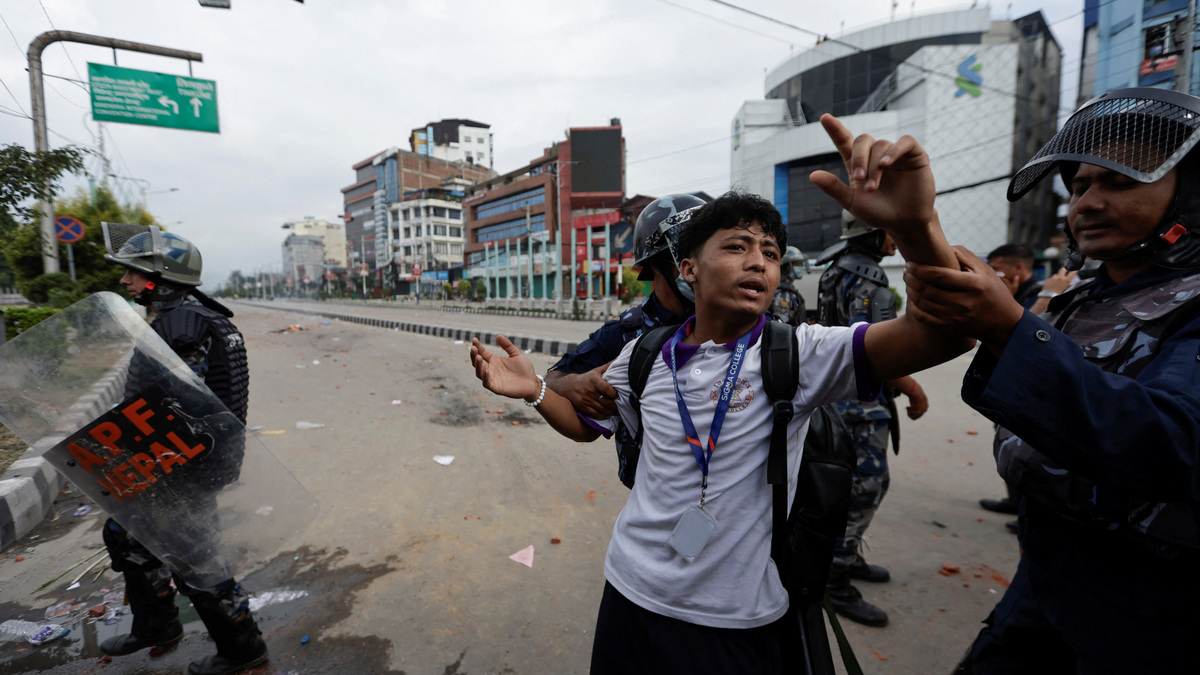At least 19 people have died and hundreds have been injured in the Nepal protests.
The unrest broke out after the KP Sharma Oli government banned around two dozen social media apps, including X, Facebook and Instagram. Protesters were also demanding an end to corruption within the government.
On Monday evening, Nepal’s Home Minister Ramesh Lal Lekhak resigned. Lekhak, who submitted his resignation to Oli during a Cabinet meeting called by the Prime Minister, took moral responsibility for the toll.
Who organised the protest?
Authorities said one of the protests was organised by Hami Nepal. The non-profit organisation was unofficially established in 2015 and formally registered in 2020. Based in Kathmandu’s Baluwatar, it is chaired by Sudhan Gurung.
Follow all live updates on Nepal’s Gen Z protests here.
The NGO’s social media describes Gurung, 36, as a philanthropist who has spent over a decade mobilising resources for disaster relief, social services and emergency aid. This includes coordinating international funding, securing donations and distributing essential supplies to communities affected by earthquakes, floods and landslides.
On Instagram, the NGO put up a post calling for protests at Maitighar Mandala on 8 September. It used social media, including Instagram and Discord, to rally students. It also uploaded videos on “how to protest” – urging students to bring college bags, books, and to attend in their school uniforms.
Gurung has said he was moved to establish the NGO in the aftermath of the 2015 earthquake . “A child died in my arms. I’ll never forget that moment,” Gurung told The Annapurna Express. He added that he had put out an SOS on social media – to which 200 people responded.
The NGO’s motto is “For the People, By the People.” It currently has over 1,600 members. The organisation says it has previously partnered with the Nepal Army for flood rescue training and several other civilian projects. According to its website, it has distributed over 500 jackets in different schools, while its social media highlights food, clothing, blanket and medical aid drives for displaced families in Kavre, Sindhupalchok and Dolakha.
Dr Sanduk Ruit, a world-renowned ophthalmologist and philanthropist, serves as a mentor and supporter of the NGO. Manita Devkota, who was crowned Miss Universe Nepal 2018, is its goodwill ambassador.
According to the website, actress Priyanka Karki, who helped launch a plasma bank for COVID-19 survivors; Swastima Khadka, who contributed food aid to visually impaired and physically disabled households; and singer Abhaya Subba, who helped fundraise, are among its supporters.
On its Instagram account, the NGO says it is not affiliated with any political parties. Gurung has maintained that the protests were a response to government actions and corruption, and that similar rallies were being held across the country.
The NGO on its website says it has received backing from brands such as Al Jazeera, Coca-Cola, Viber, Goldstar and Mulberry Hotels.
“It’s time the new generation steps up and challenges the old ways of running the country,” Gurung previously said. “You can do anything as long as you have the willpower.”
Casualties and clashes
Police official Shekhar Khanal said 28 police personnel were also wounded as sporadic protests continued into the late evening. Military officials confirmed that the army had been deployed to bring the situation under control.
Six people died at the Bir Hospital in Kathmandu, Kantipur newspaper reported, quoting doctors. Two more died at the Civil Hospital, and another two at the KMC Hospital, according to doctors there who spoke on condition of anonymity as they were not authorised to comment.
The wounded were being treated at half a dozen hospitals in Kathmandu. Ranjana Nepal, information officer at the nearby Civil Hospital, said their emergency ward was packed with the injured.
Thousands of young people, including school students, under the banner of Gen Z, clashed with riot police in front of the Parliament building in Kathmandu. The protests turned violent when some agitators entered the Parliament complex, prompting police to resort to baton charges, tear gas shells and rubber bullets to disperse the crowd.
With inputs from agencies
)